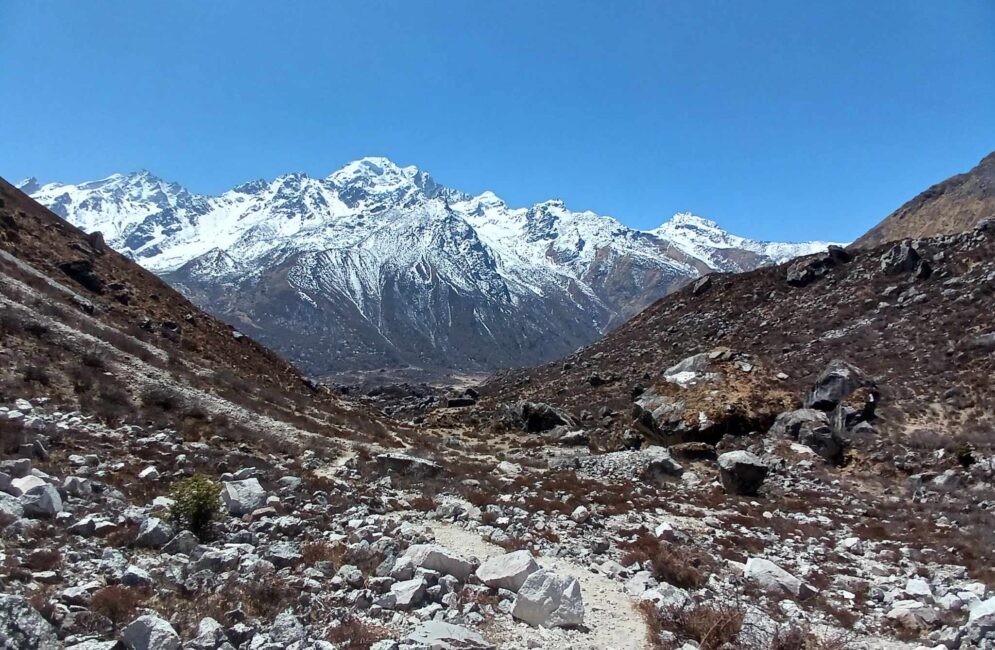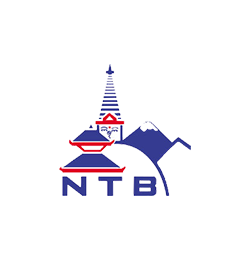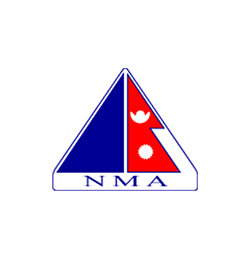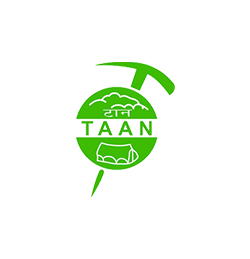
Highlights of the Langtang Valley Trek
- Stunning views of Langtang Lirung, Gang Chhenpo, and Dorje Lakpa.
- Experience the rich culture and hospitality of the locals.
- Visit traditional villages and ancient monasteries scattered all along the way.
- Trek through diverse landscapes, from lush forests to alpine meadows.
- Opportunity to spot wildlife like red pandas and Himalayan black bears.
- Great Panoramic view of Tserko Ri and Kyanjin Ri.
- Cross many suspension bridges along the way
Langtang Valley Trek Overview
The Langtang Valley Trek is one of the most beautiful trekking routes in Nepal that offers breathtaking landscapes and rich cultural heritage. Settling in the Langtang National Park, this moderately difficult trek has a lot to offer, from mesmerizing views of the great peaks to cultural experiences, and adventures, making it a popular choice among trekkers worldwide.
Unlike other popular trekking destinations, Langtang Valley Trek remains less busy and offers a sense of serenity and peace throughout the trek. The trek starts as you join a drive from Kathmandu to Syabrubesi, a picturesque village that serves as the gateway to the Langtang region. From the very first day of hiking, the views are mesmerizing as you walk alongside the glorious Langtang Khola. You navigate through dense forests, verdant meadows, and Tamang villages until you reach Lama Hotel.
One of the major highlights of the Langtang Valley Trek is the diverse set of landscapes it presents along the way. The trail smoothly transitions each day until you reach the barren landscapes at the high altitudes. Initially, you pass through lush rhododendron and bamboo forests, as you witness the flora and fauna of this beautiful region. As you ascend, this greenery transitions to alpine meadows, offering spectacular views of great peaks such as Langtang Lirung (7,227 meters), Gang Chhenpo (6,388 meters), and Dorje Lakpa (6,966 meters).
Cultural immersion is a significant aspect of Langtang Valley Trek. This region is predominantly inhabited by the Tamang people, an ethnic group with Tibetan roots. All along the trail, you stay in a teahouse inhabited by these people. As you spend the night and connect with the locals, you understand their way of living, and get a better understanding of the Tibetan culture. Trekkers also have the opportunity to visit traditional Tamang villages like Langtang and Kyanjin Gompa, where they can explore ancient monasteries. The locals are friendly, making them known for their warm hospitality. This cultural richness of the Langtang Valley adds a new dimension to the trekking experience, making each step you take on this trail worth it.
At an elevation of 3,870 meters, Kyanjin Gompa marks the highest point of the trek. For normal trekkers, there are two options to consider after reaching Kyanjin Gompa. One is summiting the Kyanjin Ri Peak at 4773 meters or Tserko Ri Peak at (5,070 meters). Both of these summits are equally tough but provide some of the best panoramic views of the Langtang region.
The Langtang Valley Trek is a perfect blend of natural beauty, cultural richness, and adventure. Being a moderately difficult trail, this trek is accessible by a wide range of trekkers, including those with no trekking experience at all. The trek takes 7-10 days to complete, allowing time for acclimatization and exploration to its fullest. Overall, the Langtang Valley trek offers an unforgettable journey through one of Nepal’s most enchanting regions.
Best Season and Weather Climate about the Langtang Valley Trek
Choosing the right season for trekking the Langtang Valley is crucial for a successful and safe trip. The weather in the Himalayas can be unpredictable, and understanding the seasons can help trekkers plan more efficiently.
Spring Season (March to May)
Spring is probably the best time to trek in the Langtang Valley. The weather is generally stable with clear skies offering the best conditions for great views. With average temperatures ranging from 10°C to 20°C makes the trek easier to complete. The forests come alive with blooming rhododendrons, adding vibrant colors to the already beautiful trail. However, being the most popular season, the flow of trekkers in this season is very high.
Autumn Season (September to November)
Autumn is another ideal trekking season for the Langtang Valley Trek. This post-monsoon season brings crisp air with clear skies offering some of the best views of the vistas. The temperature is mild, averaging between 5°C to 15°C during the day. The Autumn season sees fewer trekkers compared to spring, providing a more tranquil trekking experience.
Monsoon Season (June to August) and Winter (December to February)
The monsoon season is the worst season to trek the Langtang Valley. The trails are slippery and the chances of landslides are high. The views are all blocked by heavy fog offering an unpleasant experience.
Winters can get pretty harsh in Langtang Valley. The daytime averages range from -5°C to 5°C, making it impossible for normal trekkers to trek. Many teahouses are closed due to extreme cold and snowfall. The trails are blocked and the risk of avalanches is high.
Overall, spring and autumn are the best seasons for the Langtang Valley Trek, offering stable weather, clear views, and a comfortable trekking environment.
Langtang Valley Trail Details
One of the most beautiful trails is what defines the Langtang Valley Trek. Offering a diverse and captivating journey that takes you to the heart of Langtang National Park. The trail starts from Syabrubesi, a charming town that serves as a gateway to the Langtang region. From there, all along the way the glorious Langtang River becomes your guide leading you all the way to Kyanjin Gompa. You pass through small villages like Bamboo, Lama Hotel, and Ghodatabela, experiencing some of the wildest landscape transitions over the course of several days.
The trail gradually ascends, making it an easier alternative when compared to other treks. The trail is dotted with ancient monasteries all along the way, adding a great cultural significance. You pass through traditional Tamang villages where you interact with the locals and experience their way of life. The trail opens up day by day, as slowly you begin to see the Peak of Langtang Lirung.
Reaching Kyanjin Gompa, the options are endless but the most popular ones are Tserko Ri and Kynajin Ri. While some summits both over two days, you can choose any one of these peaks and get rewarded with a magnificent view of the Langtang region. The trail to Langtang Valley is rich in natural beauty, making it one of the finest trekking trails Nepal has to offer.
Langtang Valley Trek Difficulty Level
The Langtang Valley is a moderately difficult trek, that anyone with a basic fitness level and experience can undertake. While prior trekking experience is beneficial, it is not essential for this trek. The altitude gain is gradual throughout the trail as there are no steep climbs. While some points require physical fitness and stamina, people can easily navigate through those parts with the help of a guide. Trekkers can expect to walk 5-7 hours per day, covering a distance of approximately 10-15 kilometers daily. The terrain varies from forest paths to rocky trails that require a good level of fitness and endurance.
The maximum altitude of this trek will be at Tserko Ri at 5,070 meters, where the risk of altitude sickness becomes a concern. Thus, throughout the trek, proper acclimatization and rest days are essential for a safer trekking experience. Trekking with an experienced guide like the one from White Hill Adventure comes with a lot of benefits. With a carefully planned itinerary, and a well-educated guide to enrich your experience, having a guide by your side ensures a safe experience in the Langtang Valley.
Accommodation Details
Accommodations along the Langtang Valley Trek are mostly teahouses and lodges that offer basic yet comfortable facilities for trekkers. While stops such as Pahiro and Bamboo have much more limited facilities, where people do not tend to spend the night. Destinations such as Lama Hotel, Langtang, and Kyanjin Gompa all have a pretty good accommodation service. Some accommodation services even have facilities such as an attached bathroom and Wi-Fi. Rooms in teahouses are typically twin-sharing with simple beds and blankets. Some places even provide you with hot showers that do come with an extra price tag.
The dining areas in the teahouse are shared and cozy which often feature a wood-burning stove in the center that keeps the whole dining hall warm. Here trekkers from all around the world gather and share their stories. Most accommodations offer typical Nepali dishes such as Dal Bhat (rice and lentils), as well as other options like noodles, soups, and pancakes.
Food and Restaurants
Food and dining experiences on the Langtang Valley Trek are mostly basic. At such an altitude while getting a variety of cuisine is not possible, the teahouse offers you basic yet nutritious foods that help you continue on with your journey.
The lower altitude places such as Syabrubesi and Lama Hotel offer a mix of traditional Nepali and international dishes. Typical meals in these places include Dal Bhat, a staple Nepali dish consisting of rice, lentil soup, vegetables, and sometimes meat. Dal Bhat is the most popular meal for all trekking routes in Nepal for its nutritional value and energy-boosting properties. Other common dishes include noodles, fried rice, momo (dumplings), and Tibetan bread.
As trekkers ascend, the menu option becomes more limited, focusing only on locally available ingredients. However, the basics such as Dal Bhat, soups, and noodles remain readily available almost in all the teahouses. Breakfast options often include porridge, pancakes, and eggs, providing the necessary energy for the day’s trek.
As the teahouses are hours apart from each other, it is often recommended to carry your own snack along the way. While the food is generally simple, it is prepared with care and fresh ingredients. Carrying your own snacks such as nuts, chocolate bars, and energy bars to supplement your diet along the way will be a wise idea.
Overall, the dining experience on the Langtang Valley Trek is satisfying, providing trekkers with the necessary sustenance while offering a taste of local cuisine and hospitality.
Safety and Emergency Procedure
Safety during the Langtang Valley Trek is paramount. As per Nepal’s recent regulations, trekkers must have a certified guide. This ensures not only safety but also enhances the overall trekking experience with valuable insights and local knowledge. White Hill Adventure provides experienced and knowledgeable guides well-versed in the Himalayan terrain and weather patterns.
Altitude sickness is a significant concern on this trek. Trekkers must acclimatize properly and recognize symptoms like headaches, nausea, and dizziness. Drinking plenty of water and taking rest days for acclimatization are essential. If symptoms worsen, it is crucial to descend immediately and seek medical attention. Guides are trained to handle such situations and can provide initial care and advice.
In emergencies, White Hill Adventure provides oxygen and altitude chambers, although relying on these for extended periods is not advisable. Severe cases might necessitate helicopter evacuations, which can be costly. Therefore, it is vital to have comprehensive travel insurance that covers high-altitude trekking and emergency evacuations. Following the safety protocols and guidance provided by your trekking agency ensures a smooth and safe trekking experience.
Culture, Wildlife, and Nature in langtang Valley Trek
The Langtang Valley Trek offers a rich cultural and natural experience, set within the Langtang National Park. This region is home to the Tamang and Tibetan communities, whose cultures and traditions add a vibrant dimension to the trek. Trekkers have the opportunity to stay in teahouses operated by local families, providing a chance to experience their warm hospitality and taste traditional cuisine like momo (dumplings) and Thukpa (noodle soup).
Langtang National Park, established in 1976, is renowned for its biodiversity. The park is a haven for a variety of flora and fauna. Trekkers may encounter animals such as the red panda, Himalayan black bear, and musk deer. Birdwatchers can delight in spotting species like the Himalayan monal, the national bird of Nepal, and other high-altitude birds.
The valley itself is a blend of lush forests, alpine meadows, and towering peaks. During spring, the trails are adorned with blooming rhododendrons, providing a spectacular backdrop for trekkers. The ascent to viewpoints like Tserko Ri (4,984m) offers panoramic views of the Langtang Himal range, including Langtang Lirung (7,227m), one of the highest peaks in the area.
Sacred sites like Kyanjin Gompa, an ancient Buddhist monastery, add a spiritual element to the journey. Here, trekkers can witness traditional Tibetan Buddhist practices and even visit a local cheese factory.
The interplay of cultural richness, diverse wildlife, and stunning natural landscapes makes the Langtang Valley Trek a unique and unforgettable experience.
Trekking Preparation Tips
Proper preparation is the key to a safe and successful trek, and the same is the case with the Langtang Valley Trek. With trekking in high altitude, the major problem becomes the altitude. Know about all the possible symptoms, medication, and preventive measures. Moreover, plan your acclimatization days carefully. Trekking with a reputable agency is one of the wiset thing to do. A good trekking agency such as White Hill Adventure offers you with the best trekking preparation tips. The guides consider your safety throughout the trek and help you succeed in this awesome trek.
Physical fitness is another key to this trek, as trekkers need to be capable of walking 5-7 hours daily on varied terrain. Train a few months prior by focusing on cardiovascular exercises like walking, jogging, cycling, and stair climbing to build endurance. Strength training is also essential for the legs, core, and upper body. Plan for adequate acclimatization days and learn to recognize symptoms such as headaches, nausea, and dizziness. Staying hydrated is another thing you must focus on, as often dehydration causes altitude sickness.
Pack wisely according to the season you are trekking, make sure to include essentials such as thermal clothing, a high-quality sleeping bag, sturdy boots, and trekking poles. Don’t forget the first aid kit, water purification tablets, and snacks rich in energy. With a trusted agency like White Hill Adventure, you can get a detailed packing list, making it easier for you to pack. Mental preparation is equally important, as you must be prepared for the changing weather and harsh conditions. Stay positive and flexible throughout the trek, and make sure to have travel insurance that covers high-altitude trekking and emergency evacuations.
Photography Opportunity in Langtang Region
The Langtang Valley Trek offers unparalleled photography opportunities. The stunning landscapes from the very first day offer great pictures of the trails. The transitioning landscapes, vibrant culture, and diverse wildlife are a photographer’s dream. The panoramic views of the snow-capped peaks and the lush forests with picturesque villages surely provide a great photography opportunity.
Some Key spots for photography include:
- Kyanjin Gompa
- Tserko Ri
- Kyanjin Ri
- Langtang Khola
- Astrophotography
The ascent to Tserko offers breathtaking views of the great Langtang Lirung, particularly during sunrise when the mountains are bathed in golden light.
The trail itself is adorned with blooming rhododendrons in the spring, painting the whole hills in hues of red. The serene yak pastures and wild yaks along the way fascinate everyone that passes through it. Moreover, photographers shouldn’t miss out on capturing the local culture, teahouses, and rich cultural context all along the way.
For wildlife photographers, rare animals such as the elusive red panda, the Himalayan black bear, and a variety of bird species, including the colorful Himalayan monal, offer exciting opportunities.
Note: Ensure your camera is well protected against cold temperatures at higher altitudes. Carry plenty of additional batteries as electricity can be pretty scarce around higher altitudes.
Solo Traveler and Group Options
Solo Travelling options are very much limited in Nepal, this is due to the recent law passed that only trekkers to trek with a certified guide. Though this law was passed considering the safety of trekkers, it reduces the unique sense of freedom and flexibility that solo travelers seek.
Trekking the Langtang Valley in a group is a great way to bond with your loved ones and create a memory that lasts a lifetime. Trekking with the group comes with a sense of security and much-needed motivation during the hard parts of the trek. Moreover, Group Treks are also economical, as the costs for guides and porters are shared. This makes it a favorable option for many, allowing a supportive and enjoyable experience while exploring this beautiful region.
Personalized Support, Customer Care, and Responsible Tourism
Every trekker has unique needs and preferences which make their journey as unique and beautiful as they want. With trusted trekking agencies in Nepal, such as White Hill Adventure, anything is possible. We provide personalized support to cater to all the specific needs for making your trip unique and safe. With years of experience in creating customized itineraries that include dietary consideration, special permits, acclimatization days, and more. White Hill Adventure wants each trekker to have the best possible experience on the Langtang Valley Trek.
Customer care is the one place where White Hill Adventure doesn’t compromise at all. From the moment you book a trip with us, we take it our responsibility to keep you safe and ensure you have an amazing time. Our customer support hotline (number here) is available 24/7 for our beloved customers and our team members assist you with any problems you may face.
With the increasing number of population and trekkers in the Himalayas, it is more than necessary to implement responsible tourism. Conserving the one thing that gives us joy, and helps us connect with ourselves is mother nature, and White Hill Adventure goes above and beyond to conserve it. It is expected that trekkers to minimize plastic use, respect local cultures, and ensure fair wages for guides and porters. This helps in maintaining a good trekking culture throughout the region.
Guide Certifications and Experience
The Guides from White Hill Adventure are highly qualified and certified people, with each having over 10 years of experience in navigating the rough terrain of the Himalayas. All of our guides are accredited by the Nepal Mountaineering Association and other national-level associations.
We believe that experienced guides not only ensure safety but also enrich the whole trekking experience with their knowledge of culture, trails, and noteworthy sites along the route. They are expert in managing the group paces and ensuring safe acclimatization practices. The guides from White Hill Adventure are fluent in English and friendly which makes you feel like trekking with a friend. These guides have excellent track records and they ensure you a safe and memorable adventure in the Langtang Valley.
FAQ’s
-
How much additional money should I plan to have on hand during a trek?
Booking a trip with a trekking agency, there are only limited expenses at your hand. As most essentials are covered, you should plan for an additional $20-$30 per day for meals, snacks, and other personal expenses.
-
Do I need a permit for the Langtang Valley Trek?
Yes, to trek the Langtang Valley, you’ll require the Langtang National Park permit and a TIMS card, which is compulsory for all trekking trails in Nepal
-
Is Langtang Trek for beginners?
Langtang Valley Trek is a great choice for beginners looking to experience the Himalayas. With gradual ascents and carefully planned acclimatization points anyone with basic physical fitness can trek the Langtang Valley. One of the best options for beginners
-
What is the best time of year to trek to Langtang Valley?
The best times to trek are during the pre-monsoon (March to May) and post-monsoon (September to November) seasons.
-
Can I trek to Langtang Valley solo?
No, solo trekking is not possible in Langtang Valley, as the Nepal government has decided to only let trekkers with a guide to trek the Langtang Valley. This is for the increased safety of the trekkers.
-
What kind of food is available on the trek?
The most common dish served is the traditional Nepalese cuisine Dal Bhaat (rice and lentils). Some places offer noodles, pancakes, and other dishes.
-
Is altitude sickness common during Langtang Trek?
No, altitude sickness is not that common during the Langtang Valley Trek. The trail gradually ascends to a higher altitude without any steep climbs. Moreover, you should always be aware of potential risks and symptoms.
-
What type of accommodation is available?
Accommodation services are pretty basic throughout the trek with teahouse and lodges available. These accommodations provide basic facilities to spend your night, and recharge for the next day.
-
Do I need travel insurance for the trek?
Yes, travel insurance that covers high-altitude trekking and emergency evacuations is highly recommended for everyone who treks the Langtang Valley.
-
How many days does the trek take?
The trail itinerary typically consists of 7-9 days of trekking with acclimatization and rest days. You can always personalize your experience with White Hill Adventure to find an itinerary that suits you the best.
-
Is it possible to charge electronic devices?
In the Langtang Valley Trek, from Syabrubesi to until you reach Langtang Valley, the options to charge the electronics are low. Whereas Langtang Valley and Kyanjin Gompa have electricity supply throughout the village.
Detail Itinerary
Day 1: Kathmandu to Syabrubesi (1,550m)
A scenic drive from Kathmandu to Syabrubesi offers you insights into the village life of the countryside. Enjoy scenic views of the hills, rivers, mountains, and local villages along the way. Overnight in Syabrubesi.
Day 2: Syabrubesi to Lama Hotel (2,380m)
Start trekking from Syabrubesi, and walk along the Langtang Khola that takes you all the way to Lama Hotel. Pass through dense forests of oak and rhododendron. Overnight in Lama Hotel.
Day 3: Lama Hotel to Langtang Valley (3,430m)
Continue trekking as the landscape changes from lush forests to a high alpine desert. Pass through Ghoda Table and witness the beautiful Langtang Valley. Pass through landslide-prone to reach Langtang Village. Overnight stay in Langtang.
Day 4: Langtang Village to Kyanjin Gompa (3,870m)
A shorter trek day, as you slowly walk towards Kyanjin Gompa. Optional hike to the lake near Kyanjin Gompa if possible. Overnight in Kyanjin Gompa.
Day 5: Peak summit in Kyanjin Gompa
You can roam around the Kyanjin Gompa or summit either of the two peaks Kynajin Ri and Tserko Ri, both of which offer mesmerizing views. Descend back to Kyanjin Gompa and overnight stay.
Day 6: Kyanjin Gompa to Lama Hotel
Retrace your steps back to Lama Hotel, experiencing the same magical trail. The descent is comparatively easier offering beautiful views. Overnight in Lama Hotel.
Day 7: Lama Hotel to Syabrubesi
Continue on your descent as you reach Syabrubesi exiting the Langtang National Park. Enjoy the final day of trekking on this glorious trail. Overnight stay in Syabrubesi.
Day 8: Drive back to Kathmandu
Early morning drive from Syabrubesi to Kathmandu, as you enjoy the scenic journey back to the city. Reflect on your memories and experience in the Langtang Valley.
Cost Information
Cost Includes
- All needed transportation By Bus.
- The hotel picks up/drop by private vehicles.
- Food (Breakfast/Lunch/Dinner) Tea or Coffee Every day.
- Mountain Accommodation
- Excellent Guide (His Food, Salary, Insurance, equipment).
- All needed Mountain Trekking Permit.
- First AID and Medical Kit
- Free Kathmandu airport Pick up and Drop service.
Cost Excludes
- Beer,cola,mineral water,hot water , Wi-Fi ,battery charges ,hot shower etc.
- Your trekking equipment.
- Your Travel insurance.
- Tips.
- Porter (25 USD per day)
Equipment
For Head
- Sun hat / Scarf
- Sunglasses and Headlight
For Upper Body
- Water Proof Jacket
- Down Jacket / Warm Jacket
- Light Weight T-shirt (At least 1 pair)
For Lower Body
- Water Proof Pants
- Running tights
- Light Weight Pant
For Hand
- Gloves
For Feet
- Thin Inner socks (At least 2 pairs)
- Woolen socks
- Trekking boots (preferred comfortable boots)
Other Accessaries
- Sleeping bag
- Water bottle etc
- Suncream
- Water purification tablets
- Toiletries (Toilet paper etc)
- Warm hat
- Trekking Bag Etc.
Reviews
Outline Itinerary
Day 1: Drive from Kathmandu to Syabrubesi (1,550m) – 7-8 hrs.
Day 2: Syabrubesi to Lama Hotel (2,380m) – 6-7 hrs.
Day 3: Lama Hotel to Langtang Village (3,430m) – 6-7 hrs.
Day 4: Langtang Village to Kyanjin Gompa (3,870m) – 3-4 hrs.
Day 5: Acclimatization day in Kyanjin Gompa (explore Tserko Ri - 4,984m).
Day 6: Kyanjin Gompa to Lama Hotel – 6-7 hrs.
Day 7: Lama Hotel to Syabrubesi – 5-6 hrs.
Day 8: Drive back to Kathmandu – 7-8 hrs.






